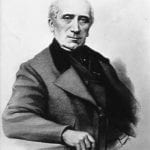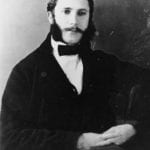Mawuli Tettey
Ghana
The Red Cross Society is a worldwide humanitarian and volunteer-based organization that protects human life and health by rendering assistance to anyone who may need it. In 1862, a Swiss man named Jean-Henri Dunant published a book titled A Memory of Solferino in which he called for the creation of national relief societies to aid those wounded in war. This was after he had witnessed the bloody backwash of the battle between the armies of Imperial Austria and the Franco-Sardinian Alliance near the small village of Solferino in Italy.
 |
 |
 |
 |
 |
| Gustave Moynier | Guillaume-Henri Dufour | Louis Appia | Théodore Maunior | Jean-Henri Dunant |
The following year five Geneva men—Gustave Moynier, Guillaume-Henri Dufour, Louis Paul Amédéé Appia, Théodore Maunior, and Jean-Henri Dunant himself—founded the Red Cross Society. It was set up as the International Committee for Relief to the Wounded, later to become the International Committee of the Red Cross, with the red cross on a white background as its emblem.
Over the years, about 190 National Societies have been recognized in almost every country in the world. This great milestone has been achieved due to the work of Henry Pomeroy Davison, president of the American Red Cross Committee.
 |
| Henry P. Davison |
In 1919 The International Federation of the Red Cross and Red Crescent Societies (IFRC) was founded in Paris in the aftermath of World War I. The activities of the Societies attracted millions of volunteers, and hence Europe could not lose such a precious asset. It was Henry Davison who proposed forming a federation of these National Societies. He also initiated an international medical conference resulting in the birth of the League of Red Cross Societies, which was renamed in October 1983 as the League of Red Cross and Red Crescent Societies; and later as the International Federation of the Red Cross and Red Crescent Societies in November 1991 (IFRC). Britain, France, Italy, Japan, and the United States of America were its founding members. The principles of the IFRC are humanity, impartiality, neutrality, independence, voluntary service, unity, and universality (IFRC Annual Report., 2016) with Per Humanitatem ad Pacem (“With humanity, towards peace”) as its motto.
Since its inception The Red Cross Society has helped millions of people, providing blood services all over the world. It supports the establishment of safe and sustainable blood systems with a particular emphasis on voluntary non-remunerated blood donation (VNRBD). Voluntary non-paid blood donors, particularly those who donate blood regularly, provide a safe, sustainable blood supply that meets the needs of patients requiring blood transfusion (IFRC2019). One major way this is done is by working with the World Health Organization (WHO) and the government of various nations. The National Red Cross Societies work with their countries’ ministries of health to educate and mobilize populations towards voluntary blood donation. For instance, in my country Ghana, representatives from the National Red Cross Society visit senior high schools to educate the students on blood donation and its benefits. They test every student to ensure that they are in good health to be able to donate blood. This has led to the nationwide establishment of Red Cross clubs in schools from the primary to the tertiary level. In addition to donating, people are able to find out their blood groups as well as their health status.
Blood plays a very important role in transporting oxygen, carrying cells and antibodies that fight infections, regulating body temperature, and bringing waste products to the liver and kidney. It is important that we join hands and donate blood to help the IFRC do what it has always done: save lives.
References
- (2016). IFRC Annual Report.
- (2019). IFRC Blood Services. https://www.ifrc.ord/en/what-we-do/health/blood-services/
Image credits
- Henry Dunant, 1855. Credit: ICRC / Photothèque CICR (DR). CC BY-SA 2.0.
- Gustave Moynier 1864-1910. Unknown Photographer. Accessed via Wikimedia Commons. From Red Cross and Red Crescent Movement History.
- Dr. Louis Appia. Unknown Photographer. From Red Cross and Red Crescent Movement History.
- Guillaume-Henri DUFOUR. From SATW ASST Commission “Histoire des Techniques”.
- Théodore Maunoir. Jules Hébert. 1870. Accessed via Wikimedia Commons. From Red Cross and Red Crescent Movement History.
- Henry P. Davison. Artist. 1919. Library of Congress Prints and Photographs Division.
MAWULI TETTEY is a first year student of the University of Ghana studying Computer Science and also works for an NGO in Ghana called First Love Foundation. He likes writing, debating, drawing, singing, and graphic design.
Submitted for the 2019–2020 Blood Writing Contest
